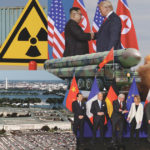By Samuel M. Hickey According to the Critical Issues poll done by the University of Maryland, a large majority of Americans across the political spectrum believe that Iran possesses nuclear weapons. It does NOT. Iran conducts nuclear research, contrary to its international commitments, into technologies with weapons applications, but it has not yet taken steps […]
Fact Sheet: The Civilian and Military Characteristics of Plutonium
Nuclear weapons require fissile materials, that is certain isotopes of uranium and plutonium, to sustain explosive fission chain reactions. Plutonium for weapons is normally obtained by reprocessing. Reprocessing is the separation of plutonium from irradiated uranium, often in the spent fuel from a nuclear reactor. The process was originally developed in the United States as […]
Fact Sheet: Uranium Enrichment: For Peace or for Weapons
Centrifuge technology is at the heart of the enrichment process, and the line between its uses for civilian and military purposes is hard to distinguish. Once a country has mastered this technology, the centrifuges can be reconfigured into cascades to either produce fuel for an electricity-generating nuclear reactor or the 25 kilograms of weapon-grade uranium […]
Fact Sheet: The Nuclear Fuel Cycle
Nuclear energy exhibits great potential as a low-carbon energy source, but carries inherent risks of diversion to weapons-related uses. At its core, the nuclear fuel cycle includes the various industrial processes associated with the production of electricity from uranium in nuclear reactors. However, some of the industrial processes more easily open the door to produce […]
Fact Sheet: U.S. Nuclear Weapons in Europe
Nuclear weapons owned by the United States have been deployed in Europe since the mid-1950s, when President Dwight D. Eisenhower authorized their storage at allied North Atlantic Treaty Organization (NATO) bases on the continent for use against the Soviet Union. Though NATO officially declares itself a “nuclear alliance,” it does not own any nuclear weapons. […]

